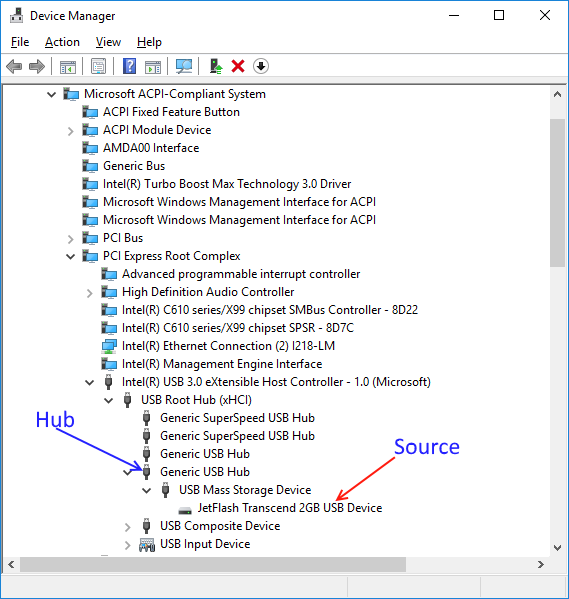Imaging (or cloning) USB drives
USB devices have some quirks, enough to warrant their own page.
Difficulty of cloning a faulty USB drive
Logically, most (but not all) USB drives consist of two parts - a regular SATA drive and a SATA-to-USB adapter (sometimes called converter or bridge).
Physically, the two may be either separable or not.
Integrated encryption adds one more dimension to the problem - even if the bridge chip can be separated from the drive, data on the drive is useless because it is encrypted.
As long as the drive functions properly, there is no problem.
As soon as the drive develops some bad blocks, the bridge chip has to handle them and pass whatever failure responses upstream via the USB bus.
However, failure responses and failure modes of a modern hard drive are extremely diverse, and commonly available USB bridges eventually lock up trying to deal with a faulty drive.
After the bridge locks up, there is no more data coming from the drive, and normally a power cycle is required to restore functionality.
Ideally, this is dealt with by converting the drive from USB to SATA, and going with an Intel SATA chipset.
Other vendors may be OK too, but I recommend Intel whenever possible.
Silicon Image and nVidia are probably not a good choice for this task.
The conversion from USB to SATA is only possible with some drives.
The external drives which have the USB bridge chip integrated on PCB typically do not have a physical SATA port and require one to be soldered on,
which is beyond the scope of software-only recoveries.
Self-encrypted drives may be not possible to access with SATA at all.
When SATA is not an option, one has to work with USB.
With any type of connection to the source, if the source drive stops responding, the imager detects this condition, pauses, and asks you to rectify the problem and retry.
Typically, you would power-cycle the drive and retry.
The imager has to ask for your assistance because there is nothing it can do to reset an uncooperative drive - the drive has already locked up and does not accept commands.
Automatic USB device reset
Enter USB device reset option.
Even though the drive itself is locked up, its upstream hub is in all likelihood OK.
So, imager finds the nearest hub upstream of the source drive and attempts to reset that hub.
It is important to note here that the entire hub is reset.
This causes all devices downstream of the hub to be reset, not just the source hard drive you are cloning.
It is not possible to reset the hub if one of devices connected to it is in use by Windows or some other program.
This also includes the imager itself - if the source and target are on the same hub,
reset is not possible because imager needs exclusive use of the target.
You can check the exact layout by visiting Device Manager.
Open it (click Windows Start, type "devmgmt.msc", press Enter),
and under View menu select Devices by connection.
Expand the device tree until you find your source drive.
Then, find its upstream hub (the hub the source is connected to).
Verify that the source drive is the only device connected the hub.
If it is not, reconfigure the system (by trying different USB ports for the source drive) until it is.
